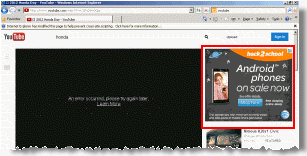In modern markets, buyers can often buy the same good or service directly from a seller, and through one or more intermediaries, all at the same exact price. How should buyers behave in these markets? The natural strategy is to choose whichever intermediary offers the greatest benefit — perhaps a rebate, some loyalty points, or superior service. One intermediary might charge sellers far higher fees than another. But to buyers, these fees are irrelevant since they are paid entirely by sellers. It’s a classic I-choose-you-pay situation, and buyers predictably head for high-benefit intermediaries. The resulting outcomes can be both distortionary and welfare-reducing. For example, seeing an airline’s flights available both directly on the airline’s web site and via an online travel agent (like Expedia or Orbitz) (“OTA”), a buyer has every reason to choose the latter — avoiding retyping name, address, and payment details that the OTA already has on file. Convenient as an OTA may be, few users would willingly pay the ~$3 per segment (~$12 for a standard US domestic connecting round-trip) that OTAs charge to airlines. So too for credit cards: Their rebates and points are valuable, but most consumers would prefer a ~3% discount (the fee the seller pays to the card network).
Last week Julian Wright and I posted Price Coherence and Adverse Intermediation, analyzing incentives and outcomes in affected markets. We find that price coherence reduces consumer surplus and welfare due to inflated retail prices, over-investment in providing benefits to buyers, and excessive usage of intermediaries’ services. Notably, competition among intermediaries does not fix these problems: Indeed, competition among intermediaries intensifies the problems by increasing the magnitude of the effects and broadening the circumstances in which they arise.
Our analysis is grounded in eight diverse markets: insurance brokers and financial advisors, marketplaces, cashback/rebate services, search engine advertising, real estate buyers’ agents, restaurant ordering, and restaurant reservations, plus travel booking and credit cards as discussed above. In each instance, a law, norm, intermediary policy, or similar rigidity prevents sellers from passing an intermediary’s fees to the specific buyers who choose to use that intermediary. They’re complex markets, some quite large, and each worth a look. Their key similarity: In each instance, if a buyer foregoes the corresponding intermediary, the buyer still pays a share of intermediaries’ charges for others. If a buyer places a benefit on the intermediary’s service, perhaps still far less than what the intermediary charges the seller, the buyer might as well sign up.
It may seem counterintuitive that a series of voluntary transactions leaves all parties worse off. After all, no one would willingly enter a single transaction that makes him worse off. But the interlocking relationships truly can have that effect. Returning to the airline example: Consumers use OTAs because they anticipate, correctly, that substantially all airlines are in OTAs and because consumers know that prices are equal whether buying from an OTA versus directly from an airline. With many users shopping at OTA web sites, airlines then feel compelled to offer their flights via OTAs. In general, an individual airline would not want to withhold its flights from OTAs — it would lose too many sales. And an individual consumer has no reason to book directly — no cash savings from forgoing the OTA-provided benefits. On net, both buyer and seller end up using the intermediary even when they were perfectly capable of finding each other directly and even when the intermediary’s fees exceed the value the intermediary actually provides.
Our draft:
Price Coherence and Excessive Intermediation (last updated March 2015)
(update: published as “Price Coherence and Excessive Intermediation.” Quarterly Journal of Economics 130, no. 3 (August 2015): 1283-1328.)
